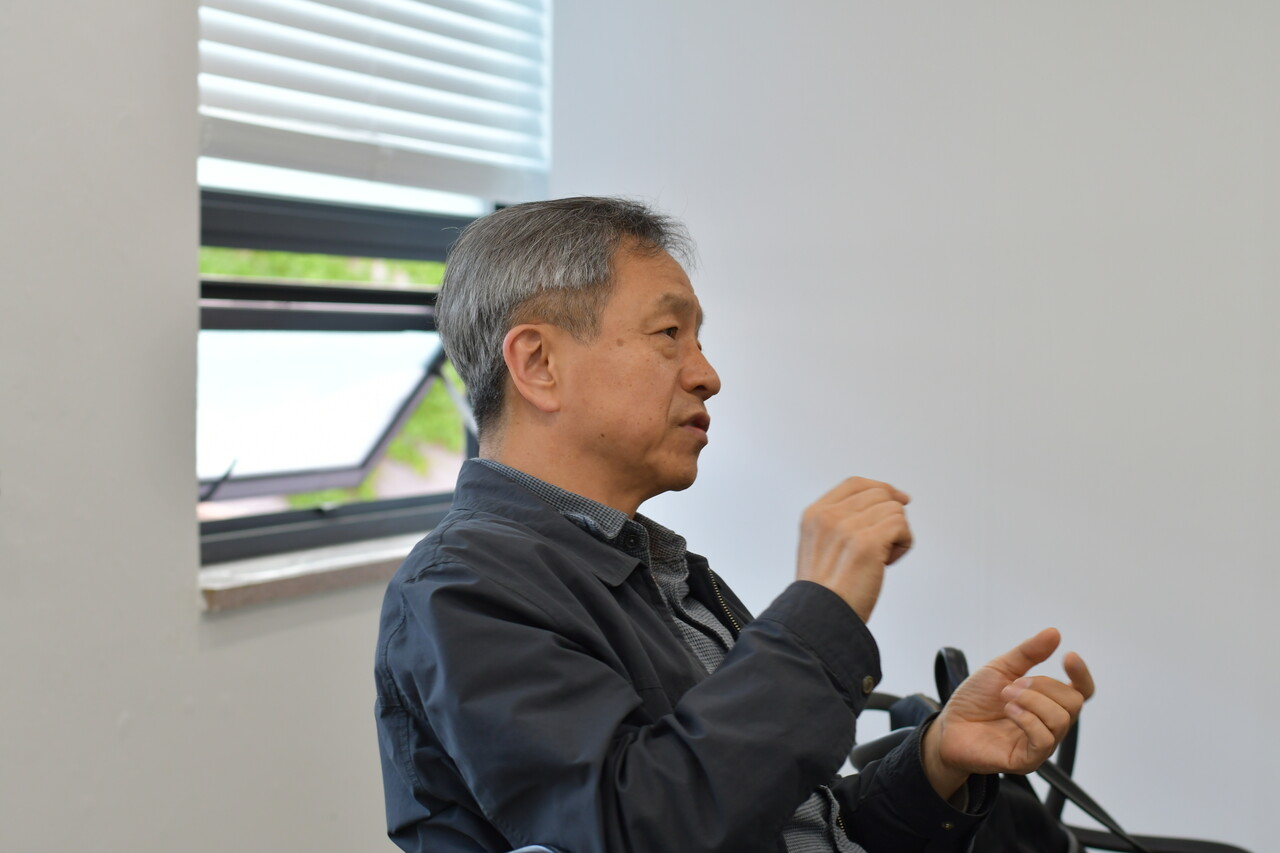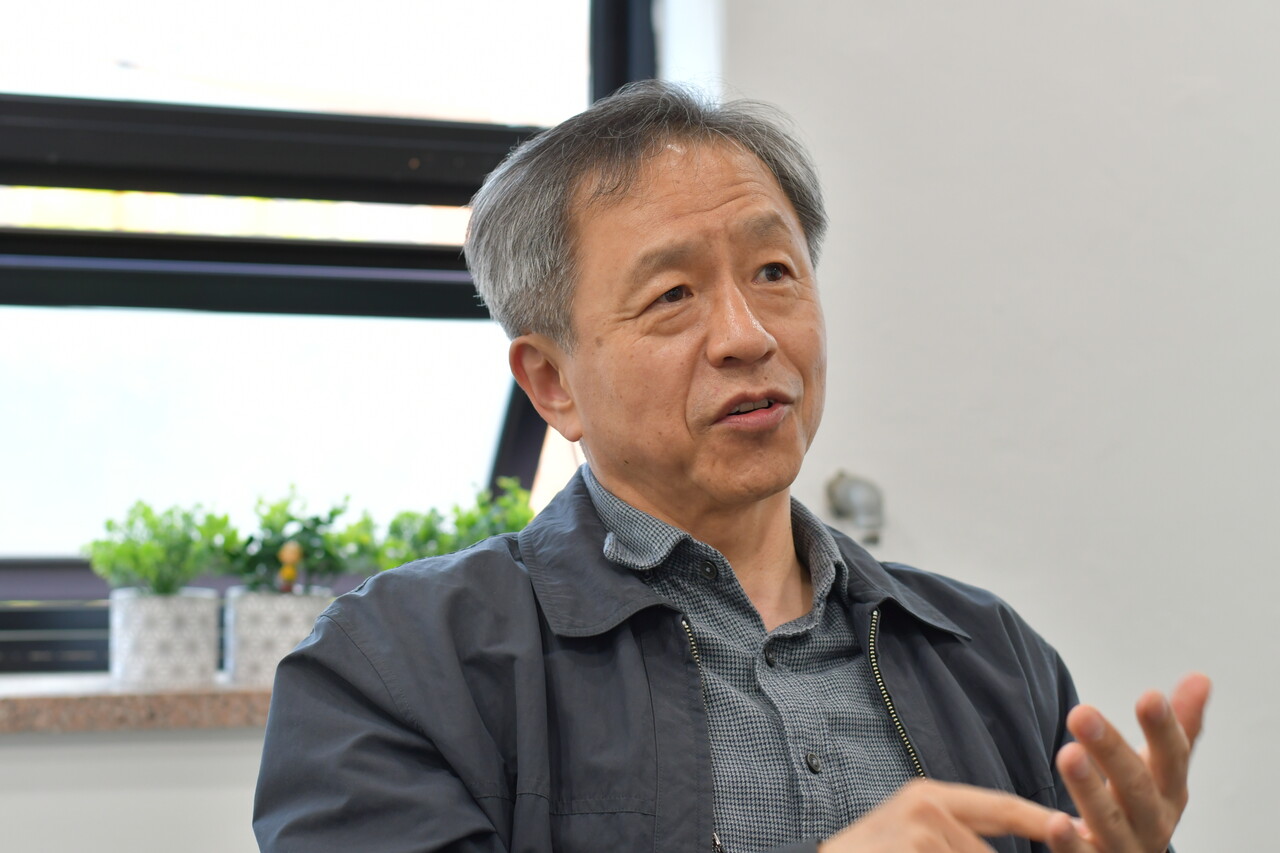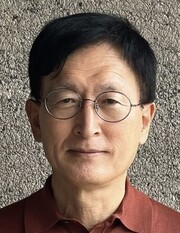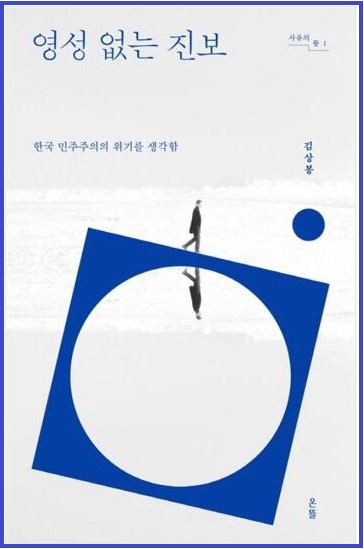불교와 기독교, 종교간 평화롭게 지내는 길
기자명 신비롬 기자
입력 2024.05.14
'종교 평화'를 외치는 이찬수 교수를 만나다
 지난 8일 평화나무와 인터뷰하는 이찬수 전 교수(사진=평화나무)
지난 8일 평화나무와 인터뷰하는 이찬수 전 교수(사진=평화나무)석가탄신일이 코앞으로 다가왔다. 과거 일부 개신교인은 석가탄신일, 절 앞에서 ‘하나님의 뜻을 전파하러 왔다’고 소동을 피우는가 하면, ‘사찰이 무너지게 해달라’고 공개적으로 기도하고, 소위 ‘땅 밟기’라는 명목으로 절에 침입해 불상을 훼손하고 법구를 부수는 등의 행위를 해 논란을 일으키기도 했다. 심지어 지난 2020년에는 불을 질러 수진사 산신각이 전소되는 일도 있었다. 지금은 많이 나아졌다고는 하나, 아직도 다른 종교에 대해 배타적이고 독선적인 태도를 가진 개신교인들이 많다.
이런 배타적인 태도를 넘어 종교 간 평화를 만들기 위해 우리는 어떤 태도를 가져야 할까? 평화나무는 석가탄신일을 맞아 강남대학교 이찬수 전 교수와 만나 종교 간 평화에 관해 이야기를 나눴다.
평화 인문학을 전공한 이 교수는 ‘종교 간 조화와 관용이 무엇인지 몸소 보여줄 필요가 있다’며 불상에 절했다는 이유로 2006년도에 강남대학교 교수 재임용에서 탈락한 바 있다. 이러한 사실이 알려지자 시민단체 등에서 대책위를 꾸려 이 교수의 복직 투쟁을 지원했고, 지난 2010년 9월 강남대학교로 복직한 바 있다. 그 뒤 서울대 통일평화연구원 연구교수를 거쳐 현재는 연세대학교 교양교육연구소에서 종교평화학 정립을 위해 노력하고 있다.
이 교수는 “종교들의 심층적 세계는 ‘생명과 평화’”라며 “서로 이해하려는 노력이 필요하다”고 말했다. 특히, ‘교회의 경우 단계적 교육을 통해 교인들이 성숙해질 수 있는 계획을 세워야 한다’며 ‘다른 종교를 대할 때 그 방식이 나에게 익숙하지 않더라도 내적 의도나 의미를 이해하려고 노력하면 좋겠다’고 강조했다.
불교학 및 종교학을 전공하셨다고 들었다.
어릴 때부터 교회에 살다시피 했는데, 목사가 되기로 한 후, 다른 종교에 대해 모른 채 함부로 판단했던 게 굉장히 부끄러워서 신학을 잘하기 위해서라도 종교학을 해야겠다고 마음먹었다. 그래서 대학원도 종교학으로 진학했다.
그곳에서 불교학을 전공했다. 불교를 공부하며 종교적 전환점, 불교식으로 말하면 깨달음에 가까운 경험을 하며 기독교나 하나님이 훨씬 잘 보이는 그런 경험을 했다. 종교들을 공부하다 보니, 외형적으로 다른 것 같아도 심층적인 세계는 같다고 생각했다. 다른 세계를 표현하는 논리나 의미, 이런 것들의 심층적 세계는 같다는 생각이 들었다.
종교들이 지향하는 세계를 누구나 알아들을 수 있는 언어로 바꾸면 뭘까 하는 고민을 했고, 그것이 ‘생명과 평화’라고 결론 냈다. 그러다가 서울대학교 통일평화연구원에 연구교수로 들어갔고, 평화인문학을 약 10년 정도 공부했다. 기독교인으로서 천주교 학교에서 불교 공부한 경험이 평화적 운동이나 연구로 나타나게 된 거다.
불교를 통해 깨달음 가까운 경험을 했다고 하셨다.
불교를 공부하며 가장 많이 영향받은 건 화엄경이라는 경전이다. 화엄경을 공부하며 세상에 관계적으로 이루어져있다는 걸 깨달았다. 집을 예로 들면, 집은 기둥과 벽, 지붕 이런 게 서로를 관계적으로 조건지으며 구성돼 있다. 그런데 우리는 분석적 사유를 하며 지붕, 벽, 기둥 이런 걸 따로 보려고 한다. 그런데 집이라는 건 기둥이나 벽, 지붕이 없으면 집 자체가 없는 거다. 결국 부분과 전체는 완전히 통하는 거라는 말이다. 그 깨달음을 갖고 신학을 보니 훨씬 더 쉽게 이해되더라.
 '교회라는 조직도 언젠가는 졸업해야 한다'는 이찬수 전 교수(사진=평화나무)
'교회라는 조직도 언젠가는 졸업해야 한다'는 이찬수 전 교수(사진=평화나무)종교학을 전공하셨는데, 다른 종교를 통해 본 기독교의 문제점이 있다면?
교회라는 조직도 언젠가는 졸업할 수 있어야 한다. 초등학교 졸업하고 중고등학교 진학하고 졸업 후 대학으로 가듯이, 신앙의 수준도 계속 높아지고 언젠가 조직으로서의 교회는 졸업할 수 있도록 교육해야 한다. 옛날 도사들이 제자들에게 수행 후 하산하라고 하는 것처럼 교회 역시 그럴 각오가 있어야 한다. 교회가 자기 존재를 유지하기 위해 졸업은커녕 신자들이 교회를 수십년 다녀도 수준이 늘 똑같다. 안타깝다.
결국 조직에 매이지 않아도 자기 삶을 유지하고 선한 영향력을 끼칠 수 있는 단계로 가는 게 조직으로써의 종교의 목적이고, 그렇게 되면 조직으로서의 종교는 졸업할 수 있어야 한다.
이제 곧 석가탄신일이다. 개신교인 중 불교에 대해 오해하는 사람들이 많다.
불교를 전혀 모르기 때문이다. 조금만 공부해도 함부로 비판하거나 갖다 붙이거나 판단하지 않는다. 모르는 것을 함부로 적대시하는 데서 ‘우상숭배’ 이런 말이 나온다.
우리가 부모에게 세배하는 건 나를 낳아준 분에 대한 존경의 표시다. 불교에서 하는 절도 그런 의미의 의례다. 거대한 진리 앞에서 자신의 겸손함을 표현하는 방식이 절하는 거다. 불상은 그냥 하나의 표상이고, 물론 불교적으로 이야기하면 부분이 전체인 세상에서 불상 자체도 진리일 수 있는데, 어쨌든 불상은 하나의 상징으로 있는 거고, 거대한 진리 앞에 자기 겸손함의 표현이 절로 나타나는 거다. 그런데 많은 개신교인이 그걸 ‘우상 숭배한다’고 잘못 말한다. 물론 절하면서 ‘돈 벌게 해달라’, ‘병 낫게 해달라’고 하는 사람들도 있다. 그런데 그건 교회도 마찬가지다.
종교는 내적 세계와 외적 표현이 있다. 외적 표현은 역사와 문화에 따라 표현 방식이 다양하다. 신부와 스님의 복장이 다르고, 절과 교회의 모습이 다르고, 다른 언어를 구사하는데, 그건 다 외적인 표현의 세계다.
그런 외적인 표현이 지시하는 건 결국 내적인 세계, 깨달음의 세계다. 종교학적 언어로는 그게 바로 신앙이다. 신학자, 불교학자, 철학자들이 풀어낸 내적인 세계를 보면 표현 양식만 다를 뿐, 똑같다.
그래서 이 내면의 세계를 보면 싸울 일이 없는데, 겉으로 드러난 가시적인 세계의 차별성만 가지고 이분법, 이원론적 도식을 적용한다. 그게 바로 갈등의 근본적인 원인이다. 봐야 할 심층은 보지 않고 표면만 보는 데서 오는 부작용들인데, 그 부작용들이 쌓여 마치 정당한 것처럼 돼버렸다.
그렇다면 왜 내면의 세계에 집중하지 못하는 걸까?
아까 말했듯 종교에는 내적 세계와 외적 세계가 있는데, 외적 세계에 다양한 사람들이 모인다. 이들 중심에는 ‘나만 유리하면 좋겠다’는 자기중심주의가 있다. 그래서 자신과 떨어진 사람들에 대해선 배타적일 수밖에 없다. 집단도 마찬가지다. 다른 사람을 용인하기 위해선 양보도 하고 오해도 풀어야 한다. 그 과정에서 개인 또는 집단이 손해를 볼 수밖에 없다. 대부분 그것을 감수하지 못하기에 어려운 점이 있다.
또 종교지도자는 신자들의 자기중심 욕망을 잘 뒷받침하는 방식으로 종교 집단을 유지하고 확장하려 한다. 하지만 본연의 신앙을 지킨다면 사실 양적으로 성장할 수 없다. 이웃을 생각하며 양보하면 규모가 축소될 수밖에 없다. 그런데 규모가 축소되면 ‘무능한 지도자’라고 말한다. 그러니까 지도자들도 그렇게 하기 어렵다.
다른 종교에 대한 오해가 불식되지 않는 원인은 대체로 이런 데서 찾을 수 있다. 요즘은 다른 종교에 대한 이해 폭이 넓어지는 중이긴 한 것 같지만...
다른 종교에 비해 기독교가 유독 다른 종교에 배타적인 것 같다.
신이 인간 밖에 있다고 말하는 종교일수록 신과 나와의 관계를 설명하려 도그마가 발달한다. 자신 안에 있다고 생각하면 내 안에서 찾을 수 있는데, 그게 아니다 보니 도그마가 생기고, 교리가 생긴다.
불교는 도그마가 거의 없다. 스스로 깨달음을 추구하고, 그 깨달음은 결국 자신을 비우는 형태다. 그렇기에 불자들은 남을 죽이는 형태를 그다지 상상하지 못한다. 다른 종교가 열등하기에, 진리가 없기에 죽인다는 생각이 불교 세계에는 거의 없다.
동양 종교는 내면에 집중하는 게 많아 대중적으로 모이기가 힘들다. 그런데 기독교는 교리가 명확하니 사람들이 모이고, 모인 사람들도 교리 중심으로 지향점이 분명하다. 그러면 자신감이 생기고, 정체성이 분명해진다. 그렇게 되면 이제 다른 종교에 배타적인 행위도 서슴지 않는다. 혼자서는 못하는데, 자신을 지지하는 세력이 있다 보니, 자기 행위가 옳다면서, 악을 부수는 행위가 나타나는 거다.
진리가 내면이 아닌 밖에 있고, 우리 쪽에 진리가 있고, 저쪽에는 진리가 없다고 말하며, 그렇게 착각하는 순간 공격적인 자세가 나타나는 거다. 기독교뿐만 아니라 이슬람도 비슷하다. 불교는 도그마가 약하기에 세력화하기가 어렵지만, 기독교는 세력화하기가 쉽다.
예수는 자신을 희생하는 방법으로 복음을 선포했다.
분명 교회의 시작은 예수지만, 교회도 하나의 조직이다. 조직은 자신을 운영하기 위한 제도를 필요로 하고 도그마를 기반으로 집단화하는 순간, 그리고 그 집단이 커지는 순간 그 기원과는 멀어질 수밖에 없다. 다른 종교도 마찬가지다. 제국의 종교가 되는 순간, 제국 밖의 세력은 정복의 대상이 된다.
종교 간의 평화를 이야기하면 개신교 내부에서 공격받는 모습이 종종 보인다.
그런 행위를 신앙의 도전으로 여긴다. 사실 더 큰 진리를 보라는 건데, 교단 내 있는 사람들에게는 그게 위협으로 느껴지는 것 같다.
종교인들이 평화라는 말은 많이 하는데, 이 평화는 자기중심주의를 극복하는 데서 온다. 그런데 그게 잘 안된다. 오히려 국제 정치 쪽 사람들이 평화를 많이 이야기한다. 신학자나 인문학자가 평화학을 제대로 해야 하는데, 아직은 시장이 없어서, 접근이 어렵다. 평화는 타자에 대해 자신을 조금씩 양보하는 데서 생기는데, 종교인조차 자기중심주의를 내려놓으려 하지 않는다. 그래도 평화라는 말을 전승해 온 주체가 종교이기도 해서 그나마 종교적 양심에 호소하면 좀 하려는 사람들이 생긴다.
 평화를 위해선 서로 이해하려는 태도를 가져야 한다는 이찬수 전 교수(사진=평화나무)
평화를 위해선 서로 이해하려는 태도를 가져야 한다는 이찬수 전 교수(사진=평화나무)진정한 평화를 위해 우리가 해야 할 일이 있다면?
밖을 향한 외침 못지 않게, 개인적 차원에서는 묵상, 명상과 같은 자기 내면 돌아보기도 중요하다. 글을 쓸 줄 아는 사람은 글로 다른 사람을 계몽시키는 것도 필요하다. 하지만 가장 중요한 건 왜 세상이 폭력적인지 그 근본 원인을 이해하려고 노력해야 한다. 그런 노력이 없다면 평화와 폭력의 경계에 있는 사람들을 설득할 수 없다.
이는 비단 종교뿐만이 아니다. 정치도 마찬가지다. 평화를 위해선 진보와 보수가 서로 이해하려는 태도를 가져야 하는데, 쉽지 않다. 어떤 균형, 건강한 균형을 이루면서 평화 쪽으로 인도해야 한다. 그게 평화의 기초인 것 같다.
교회적 차원으로 보면, 교회는 교육 단계를 좀 더 나눠야 한다. 초등학교부터 대학교까지 단계가 있고, 그 단계를 통해 성숙해진다. 그런데 교회는 맨날 같은 내용을 반복만 한다. 반복하니 그 자리에 머물 수밖에 없다. 장기 계획을 갖고 교회에 온 사람들의 연차에 따라 배우는 내용들이 조금씩 달라지도록 해야 한다. 종교 생활을 몇십 년 했으면 성장해야 하는데, 똑같은 모습이다.
마지막으로 하고 싶은 말이 있다면?
모른 채 함부로 판단하지 않았으면 좋겠다. 사람들은 각자 다른 곳에서 저마다 삶을 치열하게 살려고 노력한다. 그 삶의 방식이 다르게 보여도, 그리고 그 방식이 나에게 익숙하지 않더라도 그 내적 의도나 의미를 이해하려고 노력하면 좋겠다. 이건 종교도 마찬가지다. 자기 눈의 들보는 보지 못하고, 남을 몰아세우다가는 그게 부메랑이 되어 자기에게 돌아온다.
신비롬 기자 cloud@logosian.com


 Author
Author 김근수 해방신학연구소장
김근수 해방신학연구소장 김상봉 교수 지음 [영성 없는 진보] 책표지.
김상봉 교수 지음 [영성 없는 진보] 책표지. 윤석열 대통령이 12일 청와대 상춘재 앞에서 종교지도자 오찬 간담회 참석자들과 기념촬영을 하고 있다. 2024.3.12. 연합뉴스
윤석열 대통령이 12일 청와대 상춘재 앞에서 종교지도자 오찬 간담회 참석자들과 기념촬영을 하고 있다. 2024.3.12. 연합뉴스








